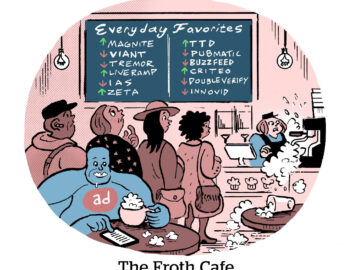

Thank you!
Just one more thing before you go...

The Current Consent Model Is Broken — Let’s Give Consumers Something Better

By Keith Petri, CEO, lockr
They’re the latest scourge of the internet. No, we’re not talking about meme stonks, crypto bros, or fake news troll farms. We’re talking about the show-stopping, screen-blocking, consumer-hostile data privacy consent messages that are everywhere.
Four years ago, the EU’s General Data Protection Regulation or GDPR went into effect, requiring any website accessible in Europe (aka every website in the world) to prominently display its privacy policy and to let people accept or reject cookies, the files that allow personal data to be collected. Instead of solving the cookie problem, it created a monster that annoyed consumers to the point where they simply gave up and hit accept.
Now consumers just slip into a routine of clicking to close and move on. Sadly, by hitting accept, they are now consenting.
I mean, when was the last time you read the terms of the agreement for a cookie consent banner?
The problem is so acute that Google and Facebook have been fined for manipulating dark patterns trying to force consent. There’s even a market for agencies that promise to deliver “consent rate optimization,” creating banners that trick, I mean encourage, people to hit the Accept button. Regulators, meanwhile, are lobbying for major changes to real-time bidding systems as a result. It’s a giant mess, and one of our own making.
But what if, rather than just trying to improve or optimize the consent process, we as marketers focused on giving consumers full control instead? The truth is, if it’s worth it, consumers don’t mind sharing personal information, especially with trusted brands if it gives them what they want.
Witness the explosive growth of thousands of direct-to-consumer (DTC) brands like Allbirds, StitchFix, and Away which were built almost entirely on mountains of first-party consumer data. Consumers happily dole out their email addresses and phone numbers and follow and like these brands on social media in exchange for something they really want: cool content, personalized recommendations, or special deals.
Consumers know websites are collecting their data and they care about what is being gathered and how it’s being used. What they don’t want is unsolicited spam or phone calls, ads that stalk them around the internet, or roadblocks and pop-ups they must swat out of the way as they browse.
What they do want is what you and I want, to get right to the good stuff, whether that’s information, a product, exclusive access, a great price, entertainment — or all of the above.
It’s time to be upfront about what data we’re collecting and what we’re doing with it. We need to give consumers complete control about what they want to share — and what they don’t — and what the value exchange is. And we need to have good ethics about it all. (Here’s an idea: What do you want companies to do with your data? Let’s do that.)
This is essential as data becomes more important and more valuable. We have a responsibility to be good stewards of that data in how we use it (and protect it).
The Opportunity That Lies Ahead
What worries most consumers is not the act of consent but the implications of the unfettered spread, use and abuse of their personal data. But if you build the right architecture around control, then it’s easy for consumers to reverse (or tighten) consent if the value exchange for their data no longer makes sense.
And when that happens, if we get control right and let consumers truly control their data, the consent hurdle will fall.
View the original article in ANA.

Machine-Generated Email Cost Calculator
Unlock additional revenue by integrating with Identity lockr.
Select your industry vertical.
How many registered users or newsletter subscribers do you have?
Average monthly emails sent to each subscriber per month?
What is your average email open rate?Optional
What is your average email click rate?Optional
Has lockr previously analyzed the machine-generated emails in your first-party data?
What was the percentage?
Enter your RPM (page revenue per 1,000 sessions).
What is your average monthly subscriber growth rate?
What is your anonymous web visitors monthly pageview traffic?
What is your authenticated monthly pageview traffic?
Projected Incremental Revenue
Projected Annual MGE Overhead
| MGE Fees | $0 |
| MGE Lost Email Revenue | $0 |
| MGE Advertising Leakage | $0 |
| One month of Email Jail | $0 |
| Incremental Revenue | $0.0M |
Enter your email to receive the full report.
Are you sure you want to leave?
Changes you made will not be saved.







